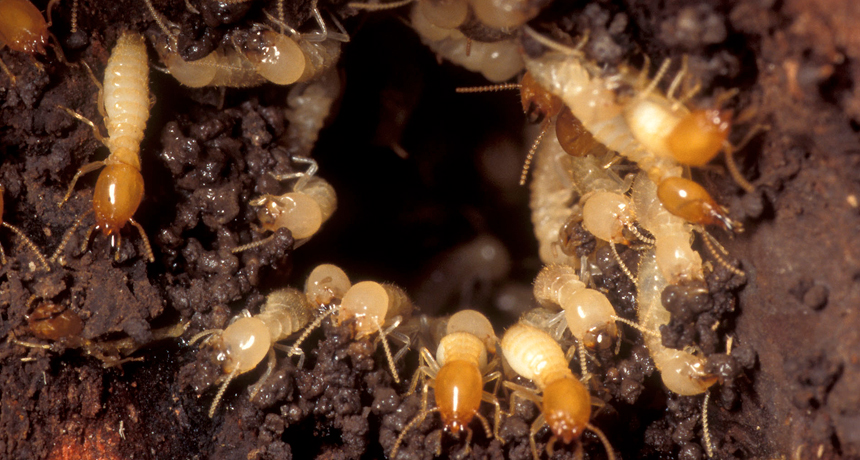Termites and Global Warming
It is an established fact that termites cause more damage in dollar terms worldwide than the combined ravages of fire, flood, earthquakes, tornadoes and hurricanes combined.
Having come to terms with those statistics, we now have to contemplate the notion that termites are also responsible for 18% of the world’s methane output.
Many people mistakenly believe that Methane, (CH4) causes damage to the globe’s Ozone Layer, but the problem is even worse, because methane is responsible for Global Warming, and that is a far more complex and serious problem.
It’s believed that around 38% of the greenhouse gas effect is caused by methane, putting it second on the list of offending gases behind carbon dioxide. Methane breaks down in the atmosphere to form carbon dioxide, ozone, and water, all of which absorb heat. The temperature of the atmosphere rises, the ice caps melt, and before you know it, you’re pumping the South Pacific out of your cellar.
Termites release an estimated 80 billion kilograms of “Greenhouse gas” per year.

Considering that there is an estimated 240 quadrillion termites scurrying about the planet, that’s 60 million of those insect pests for every man, woman and child, and that the billions of tiny, burrowing Isoptera are “letting rip” every second of every day.
There are more than 2000 different species of termites and the amounts of methane produced varies considerably between species, with some producing no methane at all. Methane is produced in termite guts, by symbiotic bacteria and protozoa, during food digestion.
The primary impact of humans on termite methane is reduction of emissions through termite habitat destruction. Many of the most important methane producing termite species are found in tropical forest areas, huge swathes of which are destroyed each year for logging, agriculture and housing developments. Additionally, in North America and elsewhere colonies of termites are regularly exterminated due to the threat they pose to wooden structures such as your home.
It is estimated that tropical forests, grasslands, and savannahs of Africa, Asia, Australia, and South America regions contribute approximately 80% of global termite emissions.
Another more recent breakthrough in our understanding of termites is the introduction of carbon dioxide attractants in baiting systems. Termites are very attracted to carbon dioxide, in fact this is how they find food and even shelter, and it has consequently led professional pest managers to select products that capitalise on this so as to make it a fatal attraction for stronger more reliable termite colony eradication.
Who would have thought that having annual termite inspections, installing termite baits, monitors or some of the other available strategies would assist in minimising our “Carbon Footprint?
Remember to schedule your annual termite inspection with a reputable, licensed and experienced professional pest control operator such as RID Pest Control – 0414 567 977
Got termites..? Get RID
DID YOU KNOW: Termites are blind!
